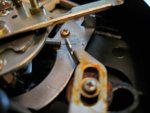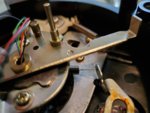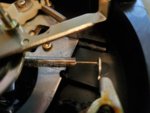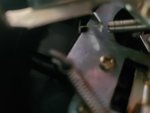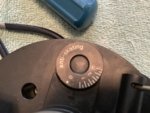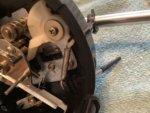debianlinux
Well-Known Member
Not just the stylus, the whole headshell assembly. It's particularly bad in the lead in to the 1st track but is quite visible and audible on any run outs between tracks. Once it gets into the music grooves it settles down and seems fine. I think it is jumping forward but i cannot be 100% sure.
Ortofon 2M Red on a Technics SL 1900 set at 1.9g VTF. Just recently started. At first I suspect stylus wear but I have a spare stylus/headshell laying around. Nothing special some old empire but the needle itself is never used. It does the same thing. I've experimented with increasing tracking force and increasing and decreasing anti-skate.
I'm starting to suspect the anti-skate has slipped and needs to be disassembled and re-greased and put back together correctly (the cue action was seized when I procured the table a few years ago). Testing the skating int he run out flat space I'm not seeing any real improvement setting anti skate to max level over it rushing to the center of the record.
I was seriously looking at moving to a Grado Gold 3 but this latest issue is stalling that for sure. Any words of advice or insight much appreciated.
Ortofon 2M Red on a Technics SL 1900 set at 1.9g VTF. Just recently started. At first I suspect stylus wear but I have a spare stylus/headshell laying around. Nothing special some old empire but the needle itself is never used. It does the same thing. I've experimented with increasing tracking force and increasing and decreasing anti-skate.
I'm starting to suspect the anti-skate has slipped and needs to be disassembled and re-greased and put back together correctly (the cue action was seized when I procured the table a few years ago). Testing the skating int he run out flat space I'm not seeing any real improvement setting anti skate to max level over it rushing to the center of the record.
I was seriously looking at moving to a Grado Gold 3 but this latest issue is stalling that for sure. Any words of advice or insight much appreciated.
